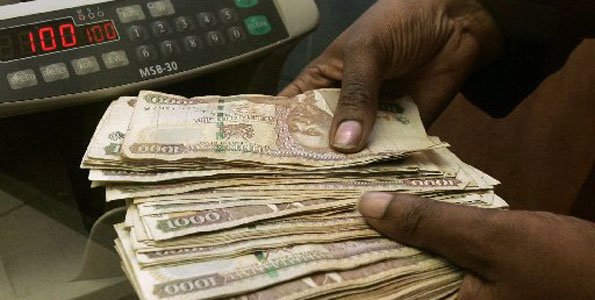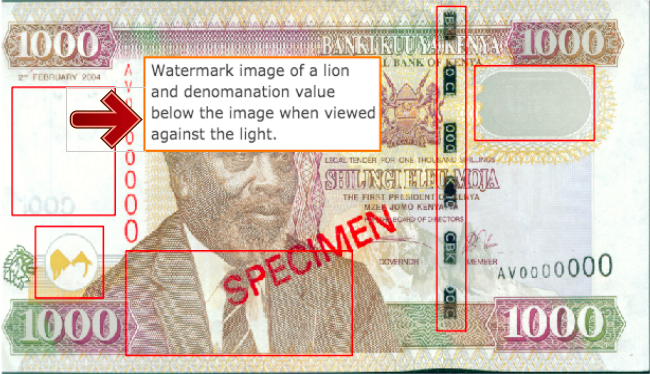
The large sums of fake currency seized by the police in recent months have startled many raising questions whether Kenyans are being duped with useless counterfeit money in the streets.
Can you tell the differentiate between genuine and fake money?
About Sh.17 billion in fake currency were nabbed at Barclays Bank on 19th March,2019.

In February 27 a huge cache of largely fake foreign cash amounting to Sh32 billion was seized in a residential house in Ruiru town, 26km north-east of Nairobi.
The Central Bank of Kenya is the only authorized issuer of new currencies and its bad news for anyone who finds themselves unwittingly holding a counterfeit note because they are totally worthless.

The CBK has has so far issued notes in the denominations of KES 50, KES 100, KES 200, KES 500 and KES 1000 in this series.
These notes contain distinct easily recognizable security features to facilitate the detection of genuine notes vis-a-vis forgeries.

Below are simple tips to spot fake notes.
1. Portrait Watermark
A three dimensional portrait of a lion’s head can be seen when the note is held up to the light. The watermark has a three dimensional appearance with areas in varying tones of dark and light.
Below the watermark is the value numeral of the banknote i.e 1000, 100 etc. This number can be seen when the note is held up to the light. Both the portrait and value numeral depict some brightness when held up to the light.see illustration below;

2. Kenyatta’s Rough Coat
When you touch the collars of Mzee Kenyatta’s coat on the Ksh 1000 note, the feeling should be very rough as shown below.

3. Security Thread
All genuine banknotes have a distinct interwoven thread running vertically down the right hand side of the notes.
When held up to the light, the thread appears as a continuous line and it shows a series of text featuring the denomination numeral of the note and the letters CBK. The current generation of banknotes features two types of threads:

For the 1,000 and 500 shillings denominations, the thread is thicker and portrays a colour shift when viewed at angles.
On other hand, the 50, 100 and 200 shilling denominations have a thinner thread silver in colour and do not depict any colour shifts when viewed at angles.
4. Size
All denominations of Kenyan banknotes come in different sizes. The value of the note determines its ultimate size.
Size of the note increases with value. The 50 shillings denomination is the smallest while the 1000 shillings note is the biggest.
Here are the sizes of the notes:
a) Kshs. 50
-Size: 138mm x 72mm
-Color: Brown and Green
-Theme: Mombasa Tusks and Nomads with Camels
b) Kshs. 100
-Size: 141mm x 74mm
-Colour: Purple
-Theme: Kenyatta International Conference Center and the Statue of Kenya’s founding President
c) Kshs. 200
-Size: 144mm x 76mm
-Colour: Brown Green
-Theme: Cotton picking
d) Kshs. 500
-Size: 147MMx 78mm
-Colour: Multi Colour Black Red and Green
-Theme: Kenya’s National Assembly
e) Kshs. 1000
-Size: 150mm x 80mm
5. Serial Numbers
The serial numbers of a genuine note are asymmetrically arranged and has progressively larger digits in adjacent positions.
Genuine currency has two sets of serial numbers. One appears horizontally while the other one appears vertically.
The vertically arranged serial numbers on the left hand side of the note glow when held against UV Light.